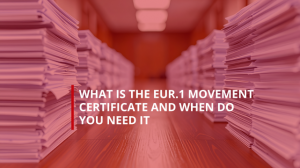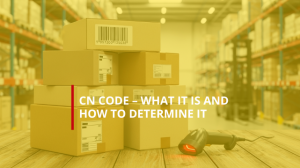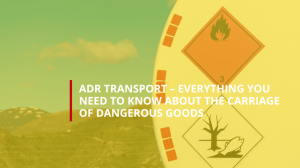

25/06/2024
EXPORT CUSTOMS CLEARANCE – STEP BY STEP
EXPORT CUSTOMS CLEARANCE – STEP BY STEP
Export clearance is possible after the necessary customs formalities have been completed. The entire process can be carried out by a customs agency, but the exporter is always responsible for providing the required documents. What do you need to know? We invite you to read.
What exactly is export clearance?
Export is the movement of goods out of the customs territory of the European Union It is possible after the completion of customs formalities. These formalities are initiated by the submission of a customs declaration by the Customs Agency / Exporter for the export procedure or a declaration for re-export (in the case of non-EU goods). Customs accepts the customs declaration and, after inspection, releases the goods for the export procedure.
In the organization of clearance and in the preparation of documents, the exporter can be assisted by customs agencies. The purpose of customs clearance is to control goods leaving the EU for compliance with customs, tax and other regulations. This includes combating illegal smuggling, protecting economic interests, public health and national security.
Customs clearance can also be divided taking into account the degree of accuracy of the process. Then we talk about:
– simplified clearance – this is an expedited procedure, streamlining the operations performed. It is used by companies recognized by customs agencies as trustworthy and clearing non-regulated shipments,
– standard clearance – includes all procedures included in customs clearance, including the presentation of a set of required documents and goods.
Customs clearance should take place at the customs and tax office for the exporter’s company’s local jurisdiction or at the customs and tax office for the place where the goods are loaded. Sometimes it can also be carried out at the carrier’s warehouse, with a one-time UCS permit.
What does export customs clearance look like? – step by step
To prepare for the course of customs clearance, it is useful to know its various stages. It will then be able to be carried out efficiently and smoothly.
Customs clearance includes:
– preparation of documents – attention should be paid to ensure that the necessary documents are properly completed,
– submission of the customs declaration – it must take into account the most important information about the transported cargo,
– customs inspection – the authority will verify the completeness and correctness of the data presented,
– release of goods – at the very end, the cargo is allowed to be exported.
Preparing for this procedure in advance, will give you a chance to go through it smoothly and transport on time and fully legally.
What documents are needed for export customs clearance?
Remember that importing and exporting goods involves a number of documents. The most important ones include: commercial invoice, pro-forma invoice, bill of lading, cargo list, goods specification, import or export permit, information on the place of origin and the destination of the goods,
Sometimes it is also necessary to provide other documents such as manufacturer’s certificate, CITES certificate, B/L document, AWB shipping document or CIM/SMGS waybill.
How long can customs clearance take?
How long does it take to clear customs? Unfortunately, it is impossible to give one specific answer to this question. It all depends on the individual case. The duration of the entire procedure is affected by, among other things: the quantity and type of goods, the completeness and correctness of the documentation, the country of origin of the goods, as well as the procedures and policies of the particular customs office. The approximate average time to complete customs clearance is several hours. However, there are cases where the goods spend up to several weeks in customs.
In summary, export customs clearance is a set of steps that allow a customs office to accept the export of goods to the country to which they are planned to be exported. The products must be cleared before the customs office, before being delivered to the customer. In this way, receiving the goods in the new country means their fully legal entry into the market.
FIND OUT MORE ABOUT OUR CUSTOMS AGENCY SERVICES!
Contact us today and let's talk about your business needs!
CONTACT




